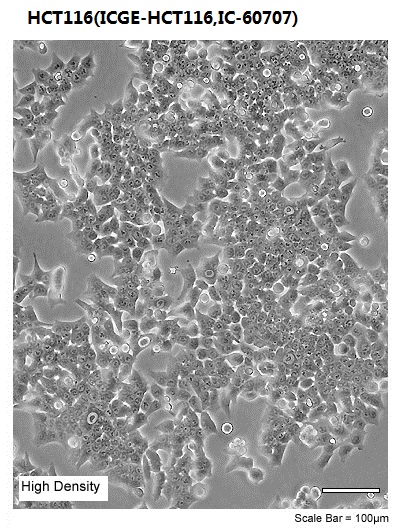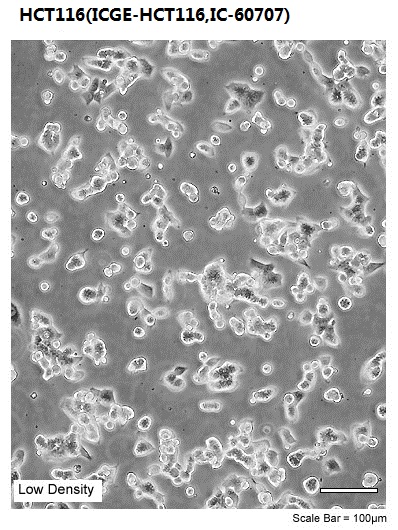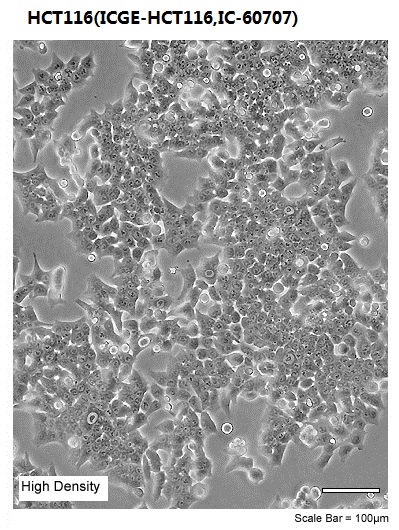


Overview
| Organism | Homo sapiens, human |
|---|---|
| Tissue | colon |
| Product Format | frozen |
| Morphology | epithelial |
| Culture Properties | adherent |
| Biosafety Level |
1
Biosafety classification is based on U.S. Public Health Service Guidelines, it is the responsibility of the customer to ensure that their facilities comply with biosafety regulations for their own country. |
| Disease | colorectal carcinoma |
| Age | adult |
| Gender | male |
| Applications |
This cell line is a suitable transfection host.
This line has a mutation in codon 13 of the ras proto-oncogene, and can be used as a positive control for PCR assays of mutation in this codon.
|
| Storage Conditions | liquid nitrogen vapor phase |
Properties
| Karyotype | The stemline chromosome number is near diploid with the modal number at 45 (62%) and polyploids occurring at 6.8%. The markers 10q+ and t(?8p;18q) are present in all metaphases and t(9q;?16p-), in 80% of the cells karyotyped. N16 is monosomic in the presence of, but disomic in the absence of t(9q;?16p-). N10 and N18 are monosomic and other chromosomes from those mentioned above are disomic. Q-band observations revealed the presence of the Y chromosome, but not in all cells (50% of cells lacked the Y in G-band karyotypes). |
|---|---|
|
|
|
| Clinical Data |
male
|
| Genes Expressed |
carcinoembryonic antigen (CEA) 1 ng per 106 cells per 10 days.
|
| Cellular Products |
carcinoembryonic antigen (CEA) 1 ng per 10 exp6 cells per 10 days; keratin
|
| Tumorigenic | Yes |
| Effects |
Yes, in nude mice
|
| Comments |
The cells are positive for keratin by immunoperoxidase staining.
HCT 116 cells are positive for transforming growth factor beta 1 (TGF beta 1) and beta 2 (TGF beta 2) expression.
|
Background
| Complete Growth Medium |
The base medium for this cell line is ATCC-formulated McCoy''''''''s 5a Medium Modified, Catalog No. 30-2007. To make the complete growth medium, add the following components to the base medium: fetal bovine serum to a final concentration of 10%. |
|---|---|
| Subculturing |
Volumes are given for a 75 cm2 flask. Corning® T-75 flasks (catalog #430641) are recommended for subculturing this product. Increase or decrease the amount of dissociation medium needed proportionally for culture vessels of other sizes.
Subcultivation Ratio: A subcultivation ratio of 1:3 to 1:8 is recommended
Medium Renewal: Every 2 to 3 days
|
| Cryopreservation |
Freeze medium: Complete growth medium supplemented with 5% (v/v) DMSO
Storage temperature: liquid nitrogen vapor phase
|
| Culture Conditions |
Atmosphere: air, 95%; carbon dioxide (CO2), 5%
Temperature: 37��C
Growth Conditions: Growth and plating efficiency are enhanced by using a feeder layer of murine fibroblasts.
|


